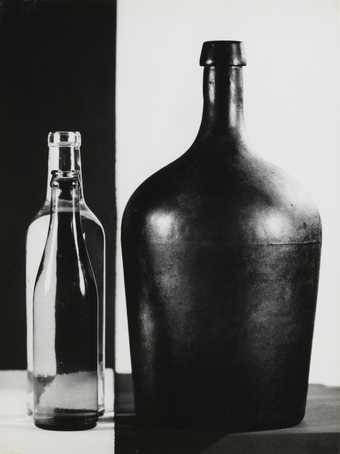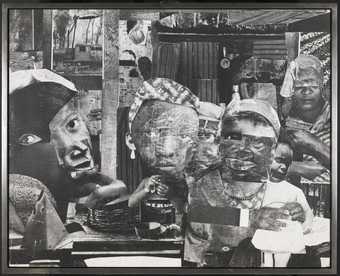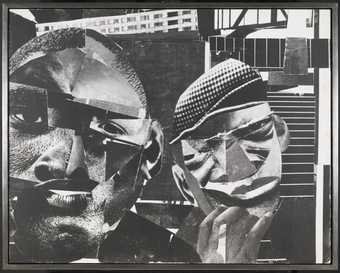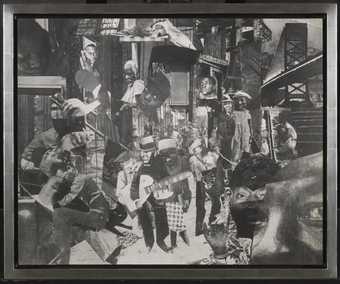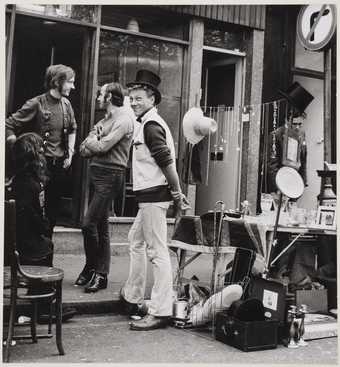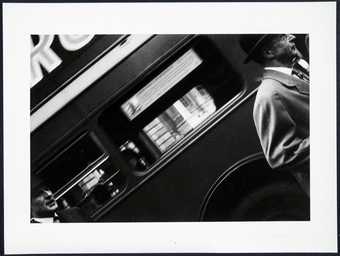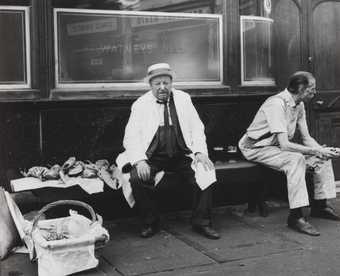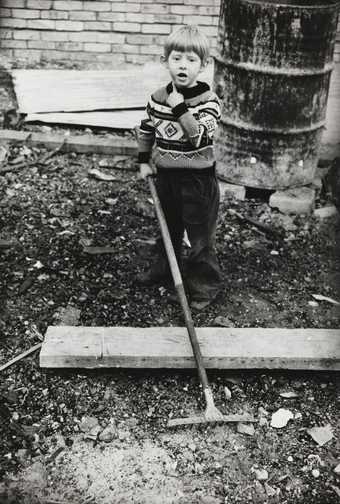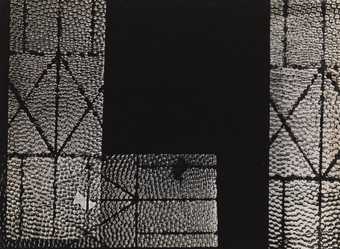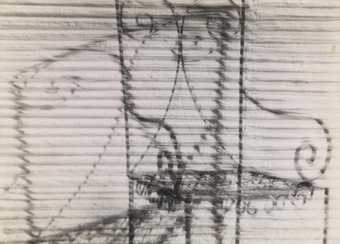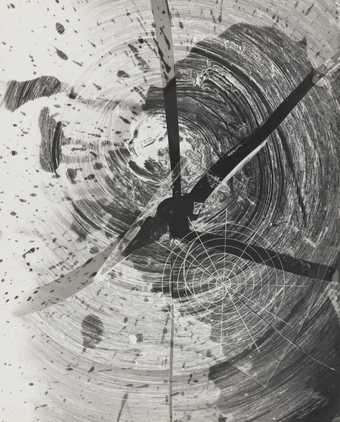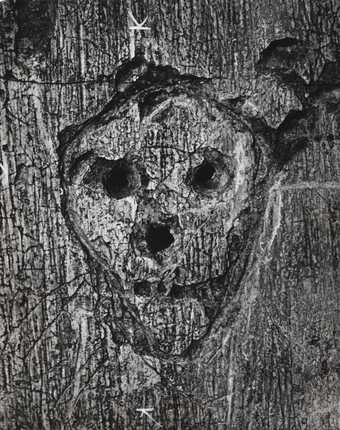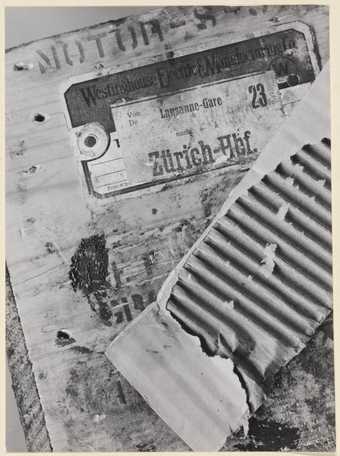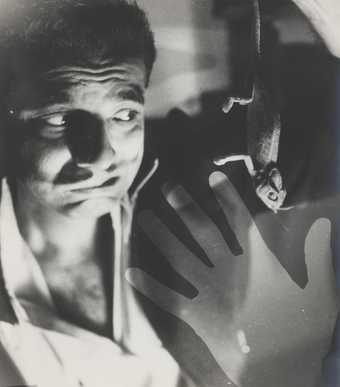
Not on display
- Artist
- Gaspar Gasparian 1899–1966
- Original title
- Mediunico
- Medium
- Photograph, gelatin silver print on paper
- Dimensions
- Image: 395 × 294 mm
- Collection
- Lent by the Tate Americas Foundation, courtesy of the Latin American Acquisitions Committee 2014
On long term loan - Reference
- L03595
Summary
Mediunic is a black and white silver gelatin photographic print made by Brazilian artist Gaspar Gasparian in 1952. Shot in his studio in São Paulo in a controlled environment, the image depicts a dark glass bottle seen through a piece of ribbed plate glass. Gasparian’s choice of subject is typical of traditional still life, yet his purposeful arrangement of the objects creates a deliberate distortion, with a series of strong diagonal lines interrupting the form of the bottle and breaking up the background. Gasparian often used props in the studio to create such distortions. The print was not editioned: Gasparian generally made very few prints, with a maximum of three per image.
The use of physical objects as filters anticipates the use of filters attached to the camera lens and, more recently, to the way contemporary photographers use filters available in digital technology. Gasparian’s approach to shooting and his darkroom technique were both unconventional. He completed all of his cropping and editing in the darkroom, beginning by taking a wide angle shot encompassing an entire scene and then arriving at the final cropped image from the contact print, often disregarding the main point of action and instead focusing on an abstract angle or shadow.
Throughout his twenty-year career Gasparian made work both in the studio and on the street, showing his versatility and will to experiment. This work – and another, slightly later work also in Tate’s collection, Triple 1958 (Tate L03596) – is typical of his studio practice, which commonly included still life studies and experiments with light and shadow. He often used glass and other studio props to produce manipulated effects, or complicated studio setups to suggest illusions of scale and depth of field. Gasparian also practiced street photography, making work in both São Paulo and Rio de Janeiro as well as in post-war Europe.
A member of several experimental photo clubs in Brazil throughout his career, in the 1950s Gasparian formed the so-called ‘Group of Six’, a collective of photographers engaged with furthering discussions around photography and photographic technique, aiming to push the medium further towards abstract and modernist aesthetics. Part of the Group’s activity involved them setting themselves tasks based on the experimental photographing of still life, and this image is representative of the tabletop compositions that Gasparian produced during this period.
Further reading
Gaspar Gasparian: Un fotografo Paulista, São Paulo 1988.
Gaspar Gasparian: A Photographer, exhibition leaflet, Pinacoteca de Estado de São Paulo, São Paulo 2010.
Shoair Mavlian
May 2014
Does this text contain inaccurate information or language that you feel we should improve or change? We would like to hear from you.
Explore
- emotions, concepts and ideas(16,416)
-
- formal qualities(12,454)
-
- fragmentation(233)
- photographic(4,673)
- texture(466)
- vessels and containers(2,157)
-
- bottle(289)
You might like
-
Gaspar Gasparian Triple
1958 -
Romare Bearden Mysteries II
1964 -
Romare Bearden Pittsburgh Memory
1964 -
Romare Bearden The Street
1964 -
Dorothy Bohm Earlham Street, Covent Garden, London
c.1960–9 -
Emil Otto Hoppé Billingsgate Fishmarket, East London
1945 -
Sergio Larrain London
1959 -
Dorothy Bohm Billingsgate Fish Market, London
c.1960 -
Errol Sawyer Untitled
1947 -
Geraldo de Barros Abstraction (São Paulo)
1949 -
Geraldo de Barros Untitled (São Paulo) Composition II
1949 -
György Kepes Propeller
c.1939–40 -
Brassaï Graffiti
c.1950s -
Werner Bischof Crate with cardboard
1933 -
Jyoti Bhatt Feroz Katpitia as Salvadore Dalí, Baroda
c.1959

